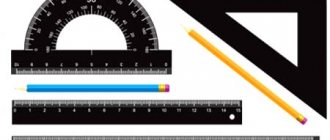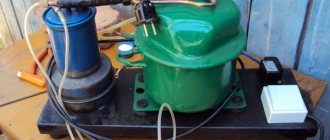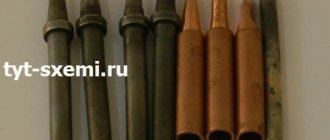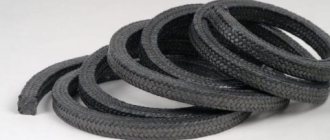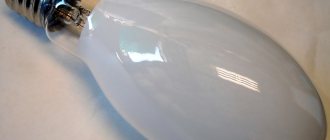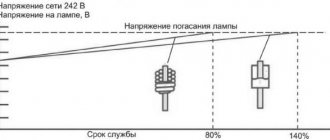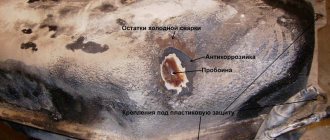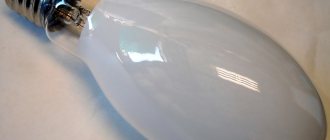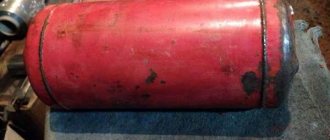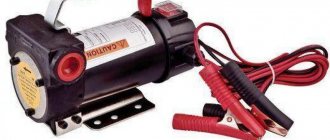The most common malfunctions and causes of failure
The most common malfunctions of a blowtorch are as follows:
- the pressure required for normal operation is absent or rapidly decreasing in the housing;
- there is no flame due to the fact that the fuel stream from the injector does not meet the required parameters;
- fuel leaks through joints and seals;
- Instead of spraying, a stream flows out of the nozzle.
Some problems can be fixed if you have the necessary tools at hand. Typically, repair work consists of cleaning individual components.
Sometimes the breakdown is so serious that it is impossible to repair the tool without the spare parts used for the blowtorch. Fortunately, you can find many repair kits in hardware stores and on specialized websites on the Internet.
The reason for the lack of pressure in the lamp may be a faulty pump. It can be replaced or repaired with your own hands. A rapid decrease in pressure occurs if the threaded connections, service and safety valves are leaking.
The problem is solved by replacing the gaskets, cleaning the surfaces of the covers and valves in contact with the body.
There is no burner flame if the fuel stream coming from the nozzle is very weak or intermittent. This can occur due to contaminants that have entered the lamp with low-quality fuel. In this case, it is necessary to clean all the channels and the jet with suitable tools and rinse the lamp with clean gasoline.
Fuel leaks through the seals of the control valve if the stuffing box, which is the sealing gasket between the body and the valve, has lost its properties. Repairing the malfunction involves disassembling the tap and replacing the stuffing box.
If fuel streams out of the burner, the reason is most likely that the nozzle opening is not correct. Before this, you need to make sure that the instrument is really warmed up. If problems of this kind recur during warm-up, the burner nozzle must be replaced.
If there are problems with the supply of fuel and air mass
In this case, prepare a straight-head screwdriver, pliers, a needle and thin wire. A fuel supply problem is detected by the appearance of foam and its seepage through the base of the nozzle. Most likely the jet is clogged.
Repair work involves the following sequence of manipulations:
- If there is a visible small gap, carefully insert the needle into the calibration recess and clean the fuel tube with it.
- If a positive result is not expected, the nozzle is removed.
- The wire is placed in the hole of the fuel pipe.
- Next, unscrew the valve.
- Pour gasoline into the channel. Perform the manipulation carefully and slowly.
- Assemble the structure into a single whole, put the jet in place.
- If flames appear from under the stem, extinguish the fire.
- Remove the valve handle and replace the worn stuffing box in the intake needle with a new one.
If the air pressure on the inner surface of the chamber in a blowtorch is broken, repairs are carried out based on the channels that function to supply an air stream. The technician should remove carbon deposits by filling the channels with trichlorethylene. Afterwards, to wash away the rust formed on the walls, rinse the channels with acid and dry by blowing with compressed air.
The work is carried out wearing special gloves. It is also better to protect your eyes with glasses.
You can watch video instructions on how to repair a blowtorch with your own hands: How to avoid regular repairs
In order to resort to repairing a blowtorch infrequently, you must follow the instructions for using the unit. We are used to turning on a blowtorch indoors. But then you should remember that the tool should be in working condition for no longer than 15-30 minutes. After use, the room is thoroughly ventilated.
You can extend the life of your equipment by applying the following rules:
- Before turning on the device, fill it with fuel. Refueling is carried out by filling the tank to ¾ of the total volume. Emptiness is necessary to create pressure.
- For pressure to be present, the pump also needs to make 10 gentle pumping motions.
- When pouring fuel into the burner tray, use an alcohol composition. Thanks to this technique, a minimal amount of soot is formed. Correct operation of the unit is possible if the fuel is ignited. There should be no drafts around.
- When fuel combustion is complete, open the needle valve. The fuel is now in a gaseous state. If drops are present, continue heating. If the burner does not heat up for a long time, place the lamp near a metal panel. Maintain a distance of 2-3 cm from the sheet to the nozzle.
- If the combustion goes out, clean the nozzle with a special needle.
- You can extinguish the torch of the instrument by screwing the valve and lowering the needle.
- Do not turn on a blowtorch near the burner. This provokes heating of the cylinder and fuel beyond 50 degrees.
- The fuel that is poured into the equipment must meet the specifications established by the blowtorch manufacturer.
Despite the fact that the design of the blowtorch is simple, it also has problems that interfere with normal operation. And if there are some malfunctions, it is prohibited to use a blowtorch. But in most cases, repairs are easy to do yourself, which will eliminate downtime and make the tool safe to use.
Essential repair tool
The following tools may be required for repairs:
- adjustable wrench;
- screwdrivers;
- pliers;
- small brush;
- sewing needle or thin steel wire.
Materials you may need include stuffing box, steel washers and nuts, gasoline or kerosene.
You will need to disassemble the tool and its components with a wrench and screwdrivers to provide access to the faulty part. You will need pliers if you have to hold the needle to clean the nozzle hole without disassembling the burner. In addition, it is convenient to use pliers to hold any screws from turning during assembly and disassembly. A brush is necessary to wash away contaminants that have entered the body and burner. It is advisable that the brush be long with hard natural bristles.
Pump repair
The blowtorch pump consists of a piston enclosed in a metal housing and a spool, which is installed at the end of the piston tube and operates on the principle of a check valve.
It lets air into the body and does not let it back out. At the end of the piston there is a leather cuff that pushes air when moving inside the lamp, and folds up to let air through when moving in the opposite direction.
This piece is simply a circle of leather sandwiched between two steel washers of different diameters. The upper washer is almost equal in diameter to the diameter of the cylinder, and the lower one is several millimeters smaller. Thanks to this, the cuff is able to pump air, folding only in one direction when necessary. To increase the service life of the cuff from repair to repair, it must be lubricated occasionally with thick lubricant.
Cleaning the jet
The jet, as already mentioned above, can either become clogged with dirt from low-quality fuel, or carbon deposits from its combustion. In both cases, cleaning can correct the situation. If you need to use the lamp very urgently, you can try to clean the nozzle with a needle held in pliers. But in this case, contaminants will get inside. Immediately after completing the work, it is necessary to disassemble and clean the entire blowtorch.
If there is no hurry, it is better to unscrew the jet from the burner and try to blow it with compressed air from a compressor or from a special can. Only if this method does not produce results, you can carefully use mechanical cleaning during repairs.
After cleaning the nozzle, it must be washed in gasoline and dried before installing it in the burner.
Nuances of operation and care of equipment
The principle of operation of a gasoline burner:
- Fill the container to the permitted level, usually 2/3 of the volume.
- The air mixture is pressurized using a fuel pump.
- Under the pressure of the medium, the process of moving the mixture into the burner begins, where it is ignited and formed into a torch.
- To ignite the mixture and smoke-free operation, the mixture is heated to an acceptable temperature. To do this, place a special cup that comes with the device under the burner; usually, one cup is enough to get the desired temperature.
- In this case, the fuel is converted into gas in the evaporator and sent to the combustion area through the nozzle. During the combustion process, O2 is absorbed, which is necessary for complete combustion.
- Next, open the adjusting needle valve.
- After a stream of gaseous mixture comes out, it is ignited. To speed up the heating of the BG, it can be installed 2 cm from the metal sheet, where the heating process and the state of the torch are controlled.
- Flame instability or attenuation requires cleaning the nozzle using a special needle.
- After completion, extinguish the torch by closing the valve and lowering the control needle.
- After cooling, the air is released from the vessel.
A gasoline unit is a high-risk device, therefore, during any work, strict compliance with safety regulations, fire safety regulations and manufacturer’s instructions is required. Violating them can lead to an explosion and endanger the lives of others.
Basic safety requirements:
- The burner can be used outdoors.
- In emergency situations, short-term operation of the BG is allowed while ensuring reliable ventilation of the room.
- It is prohibited to use the unit if there is a leak of the gas-fuel mixture.
- It is not allowed to use gasoline with parameters that do not correspond to those specified by the manufacturer.
- It is prohibited to use the unit for a long time, due to the possibility of self-heating of the structure up to 50 C.
- It is not allowed to work with a faulty safety valve.
- It is prohibited to refuel the cylinder while the fuel is burning.
Handling old lamps
Old blowtorches that have not been used for a long time should first be inspected from the outside.
During inspection, you need to check how easily all the valves and the tank lid open. The adjustment valve should turn easily. After this, you need to check the housing for leaks. To do this, use a pump to pump air into a lamp that is not filled with fuel. Then, using a brush, apply a thick soap solution to all threaded connections and the faucet. You need to check it closed and open.
If all connections are tight and the pump is properly creating pressure in the housing, the tap performs its functions by opening and closing the burner, the lamp can be refilled and started.
Article source: https://svaring.com/soldering/praktika/remont-pajalnoj-lampy
What breakdowns and malfunctions are most likely?
Let’s take the “bull by the horns” and immediately name the most likely reasons for the inappropriate behavior of the blowtorch:
- it is not possible to create and maintain sufficient air pressure in the fuel container to spray fuel;
- fuel leaks anywhere, but not through the nozzle;
- the fuel from the nozzle is not sprayed, but flows out in a stream, and not evenly, like that of a well-known animal.
Most often, the listed “adventures” can be resolved with the help of basic cleaning of “sore” areas. To do this you need to have a certain set of tools.
It also happens that it is not possible to revive the instrument without replacing parts. In such a situation, most problems can be eliminated with the help of a special repair kit, which is better to purchase in advance.
Repair kit for blowtorch
Most likely, the pressure problem is caused by a faulty pump. If there is a spare one, it is simply replaced. Otherwise, you will have to work hard to repair it yourself.
If you have to constantly pump air, it means it comes out through a safety or service valve or threaded connections. It helps to clean the surfaces of these components and replace the gaskets.
Safety precautions [ edit | edit code ]
In addition to the obvious fire hazard, a blowtorch is a potentially explosive device, since the tank contains a mixture of fuel vapor and air under high pressure, and the tank heats up during operation. Therefore, when using a blowtorch, strict adherence to safety rules is required, namely:
- do not allow the tank to heat up to a temperature above 50 °C;
- do not open the tank lid and do not refill while the lamp is running or has not yet cooled down;
- do not create excess pressure in the lamp, do not use gasoline in a lamp intended for the use of kerosene;
- monitor the tightness of the pump valves and connections;
- During transportation and storage, make sure that there is no excess pressure and no fuel residues in the tank.
The most common cause of a blowtorch explosion is the opening of the hot torch reservoir lid. In this case, gasoline vapors come into contact with a burner heated to 500-600 °C and ignite, causing an explosion of the steam-air mixture in and around the tank. You also need to take into account that the old lamps used kerosene; when filling with gasoline and subsequent use, the tank burst under pressure. Burns in this case are almost inevitable, since they usually occur when trying to “pump up”
It is necessary to understand that when igniting a gasoline lamp, the evaporator is filled with gasoline, and if at this stage the fuel supply valve is closed, then the gasoline remaining in the evaporator will continue to leave the evaporator through the nozzle in the form of a liquid, or in the case of greater heating, in the form of a gas-liquid or gas jet .
In addition, when working indoors, it is necessary to have sufficient ventilation to remove strong-smelling, toxic and carcinogenic combustion products.
A blowtorch, in most cases, can be replaced with a safer gas burner (the gas in the cylinder does not mix with air).
If there is a source of electrical energy of sufficient power at the work site, the blowtorch can be replaced with a technical hair dryer, which does not use flammable materials and is safer.
The design of a gasoline blowtorch and its instructions must be studied very carefully, since this type of device is a fire hazard. Often during repairs or installation of any structure it is necessary to heat the surfaces for better assembly.
Blowtorch device.
The use of various portable gas burners or electric hair dryers is not widely used in the household. These industrial devices are difficult to use, so a blowtorch is used to quickly heat them up. But numerous questions about operation often come to specialists. This is due, first of all, to the fact that people are a little lazy to read the instructions to the end. The descriptions and instructions are quite boring and complicated. Therefore, it is necessary to describe the operation of the lamp in a simpler way.
Read about sawmills at home here.
Don't forget about safety
- It's time to remember about safety! I can’t count how many fires the blowtorch has caused. Let's not “multiply the exploits” of past generations and act correctly:
- if you have to work in a room with walls or floors made of flammable materials, then you will have to use metal or asbestos sheets;
- the gasoline canister should be placed so far away that an open flame does not touch it under any circumstances;
- Yes, we all spill gasoline when refueling a lamp, you will have to collect it with sand or rags and take it further from the place of work;
- no twisting of electrical wires nearby or any sparking tools with brushes;
- You are not supposed to use a blowtorch in the wind, since both gasoline and flames can fly away anywhere.
Best models
A blowtorch is a primitive mechanism that does not require the use of high technology to manufacture.
However, there are many unscrupulous manufacturers who make low-quality blowtorches. Not only do they quickly become unusable, but they can also pose a danger to the worker - due to defects and incorrect tolerances, they become unsafe from the factory. We have compiled a rating of the best blowtorches so that people can choose a quality tool. When compiling the list, we were guided by people's reviews of a specific lamp model, its characteristics and cost. The rating includes lamps of different sizes, which are designed to operate on different fuels. Thus, each reader can choose a model suitable for their tasks.
Caliber LP-1.5
Inexpensive gasoline lamp with a volume of one and a half liters.
The flame level can be adjusted. It is impossible to say anything special about this lamp - the standard design makes the lamp both simple and reliable. The materials used are of good quality, so this lamp can last for years with active use. Separately, it is worth noting the fact that the main parts are chrome-plated, which means they are not subject to corrosion.
Advantages:
- cheap;
- practical.
Flaws:
fuel consumption.
| Fuel | Petrol |
| Volume | 1.5 liters |
| Fuel consumption | 1100 g/hour |
| Price | 800 rubles |
BISON "PROFESSIONAL"
A blowtorch with an ejector that runs on gasoline. It is distinguished by good performance and high quality materials. In addition, this is one of the few lamps that can run on A92/A95 gasoline.
The lamp can be used indoors because it emits less harmful fumes during operation (but good ventilation is required in any case). There are two versions of the lamp - with a tank of one and a half and two liters, respectively.
Advantages:
- quality materials;
- works with any gasoline;
- emits less odor during operation than other lamps.
Flaws:
price.
| Fuel | Petrol |
| Volume | 1.5/2 liters |
| Fuel consumption | 1100 g/hour |
| Price | 1500 - 2000 rubles |
STAYER MASTER 55590
Gas blowtorch at a low price. The main advantages of the lamp are efficiency and safety. Gas consumption is minimal, and such a lamp emits even more energy than a gasoline lamp.
Unlike lamps using other types of fuel, gas lamps are less likely to explode or ignite due to careless handling and violation of safety regulations.
This lamp is a good choice. Its only drawback is that you have to look for fuel (a suitable replacement cylinder).
Advantages:
- minimum fuel consumption;
- flame power adjustment;
- safety.
Flaws:
fuel is harder to find.
| Fuel | Gas |
| Volume | 190 grams |
| Fuel consumption | Not declared by the manufacturer |
| Price | 1300 rubles |
Leopard MIR-91451
Kerosene blowtorch with a volume of one and a half liters. Equipped with a nozzle with a preheating chamber, thanks to which the flame remains stable at all times. This ensures uniform and constant heating of the material with which the lamp works.
This lamp is suitable for those for whom kerosene is the preferred type of fuel (due to its greater environmental friendliness or availability in specific conditions).
Advantages:
- quality of execution;
- preheating chamber.
Flaws:
price.
| Fuel | Kerosene |
| Volume | 1.5 liters |
| Fuel consumption | Not declared by the manufacturer |
| Price | 1700 rubles |
Recovery tool
Nothing particularly tricky is required to repair a blowtorch:
- a set of wrenches or one adjustable wrench;
- screwdrivers may come in handy;
- pliers - they are always needed;
- the brush is small and has stiff bristles;
- a piece of thin steel wire or an ordinary needle.
It is useful to prepare kerosene for cleaning, although gasoline will also work. Steel washers, a piece of genuine leather and stuffing box may also come in handy. Using keys we will disassemble the lamp “to the base, and then...” with a brush we will rinse and clean everything, with pliers you can hold everything and it is especially convenient to hold the needle while cleaning the jet.
Blowtorch device
What's inside?
If we take on the repair of the “fire-breathing dragon,” we should figure out what’s inside it:
- Fuel tank 2 is needed not only for fuel, but also for compressed air above it. The container has a filling hole with a lid 11.
- The fuel is supplied to the mixing pipe 7 through the mixer channel 5, and the flame intensity is adjusted using valve 10.
- Fuel vapor is supplied through nozzle 8.
- Pump 12 allows you to create working pressure in the container. It makes it possible to increase blood pressure.
Power and temperature
But in practice, of course, not only the abstract consumption of fuel is important; the heating created in the flame is also very significant. Typically this figure is approximately 1100 degrees
Some devices are capable of producing 2010 degrees. This can only be said accurately in relation to a specific model. Thermal power ranges from 0.5 to 3 kW; this property can be adjusted by changing the rate of fuel supply.
The battery life is determined by the capacity of the fuel tank. Lamps consuming kerosene and gasoline burn for approximately 50 - 100 minutes (with an estimated tank capacity of 1 and 2 liters, respectively). Gas devices can operate from 75 to 90 minutes. Their fuel consumption in terms of 1 hour is 0.9 - 1.2 and 0.11 - 0.18 kg, respectively.
The blowtorch can be turned on with 2 types of flame: wedge-shaped (a torch for wide work, mainly for liquid-fuel devices) and needle-shaped (optimized for very small work over a short distance - more typical for gas devices).
How to make the pump work
The working element of the pump is a piston, which consists of a leather seal pressed between two steel washers. The piston moves in a steel tube with a spool, which acts as a check valve. The spool allows air into the container and does not release it back. Leather cuff is a ring made of thick leather with a curved edge. The washer above the cuff is larger than the washer below it, so that the leather lip opens and does not allow air to pass through when the piston moves down. On the contrary, the skin folds when the piston returns upward and air passes into the pump cavity. For normal and durable operation, the piston is lubricated with lithol or grease.
How to properly clean the jet
When working with a blowtorch, you must definitely learn how to properly clean the nozzle, which almost inevitably periodically becomes clogged. The reason for this is carbon deposits from burnt fuel or dirt in its composition. When this happens for the first time, you can clean the hole without disassembling the lamp. It is better to use a special needle from the tool kit or use a piece of wire clamped in pliers. This will leave debris in the lamp.
If the nozzle becomes clogged a second time, it is better to remove it, clean it, rinse it with gasoline, blow it out, dry it and put it back in place. If the “adventure” happens for the third time, you will have to stop work, wash both the jet and the lamp, and then fill the container with clean fuel.
It should be noted that the lamp container is made of ordinary black steel, so the appearance of debris inside as a result of rusting of the metal is not at all uncommon. If scale constantly interferes, you can try to fill the lamp, for example, with a rust remover, and then rinse it several times.
Repair and performance check
If a gasoline blowtorch has not been used for a long time, then it is necessary to determine its suitability for work. To assess the quality of the device, perform the following steps:
- After igniting the torch, the degree of heating of the outer surface of the tank is set: if heating occurs evenly and gradually, then the parameters of the torch are stabilized, and the hum of the fire becomes uniform. The tank, however, should not be heated to temperatures exceeding 50 ° C.
- The nozzle tip is placed at a distance of 20...30 mm from the steel sheet: with a normal operating lamp, heating will be uniform, and as its duration increases, the flame will stabilize, which is explained by the reflection of the heat flow from the steel surface. If at the same time the flame disappears from time to time or goes out immediately, then the lamp cannot be used.
- Check the operation of the check valve: when the device is turned off, the mixture above the surface of the gasoline in the tank should bleed spontaneously.
- Check the operating pressure limits inside the tank with a pressure gauge. During normal operation of the lamp, these pressures should not exceed 0.3 MPa. Sudden fluctuations are a consequence of a malfunction in the fuel supply system to the regulator.
Maintenance and repair of gasoline-powered blowtorches are carried out to ensure an uninterrupted and uniform supply of fuel and the required degree of dispersion. Most often, the hole in the nozzle becomes clogged, so the set of accessories for the blowtorch includes a special needle with a diameter of no more than 0.5 mm.
What is a blowtorch used for?
If you have purchased a blowtorch and working with it is now clear and simple, then the question inevitably arises: what else can you do with it? We list only the main areas of application of this useful tool:
- processing of wooden products to give them decorative and protective properties;
- tarring of poultry and animal carcasses;
- heating the old paint coating on metal parts for the purpose of removal;
- disinfection of non-flammable surfaces;
- soldering metal products, heating the soldering iron and solder;
- warming up internal combustion engines;
- heating food and shelter outside populated areas for hunters, fishermen and tourists;
- heating frozen water pipes and sewers;
- welding of metals with low melting point.
The essence of a blowtorch is that it burns high-energy fuel - gasoline. In this case, the fuel is supplied under pressure, which increases the flame temperature many times over.
Application [ edit | edit code ]
The blowtorch is used for:
- heating parts and melting solder during soldering,
- welding of some materials at temperatures up to 1000–1100 °C,
- soldering iron heating,
- heating varnish and paint coatings to remove them,
- warming frozen water pipes,
- tarring pork carcasses (burning out bristles),
- disinfection and disinsection of premises,
- cooking in camp conditions (with certain devices - in particular, a specially curved pipe),
- dismantling rusted connections of steel and cast iron pipes.
Read also: Design and purpose of receivers
How to build a relationship with an old lamp
If you get your hands on a rare old instrument, you should not rush to put it into operation.
The same should apply to a tool that has simply not been used for a long time. It is useful to start by cleaning the outside of the lamp and inspecting it carefully. You should make sure that the control valve rotates without problems, the container lid opens and seals securely. Before using the pump, it is useful to disassemble it and lubricate the cuff with lithol. Now we assemble the pump and check its operation, as well as the tightness of the tank. We pump air into the container without fuel. We apply a solution of water and soap with a brush to all connections and seals: air should not pass anywhere.
Before refilling an old lamp, it is useful to rinse the inside of the tank with gasoline, thus removing possible rust products. If all the pressure is maintained and the tap is working, fill the tool and get to work. Good luck to everyone and may the following video serve as a clear illustration of the above.
Source of the article: https://samodelino.ru/vybor-i-primenenie-instrumenta/remont-benzinovoy-payalnoy-lampyi.html
GENERAL OCCUPATIONAL SAFETY REQUIREMENTS
1.1. Persons over 18 years of age who have no medical contraindications and who have undergone introductory and initial workplace safety training, fire safety training, training in safe labor methods and techniques, on-the-job training and testing of knowledge of the requirements are allowed to independently operate blowtorches. labor protection. 1.2. Personnel involved in the operation of blowtorches must undergo: - repeated instructions on labor protection in the workplace at least every three months; — unscheduled briefing: when changing the technological process or labor safety rules, replacing or upgrading production equipment, fixtures and tools, changing working conditions and organization, violating labor safety instructions, breaks in work for more than 60 calendar days (for work which are subject to increased security requirements - 30 calendar days); — periodic medical examination in accordance with the current legislation of the Russian Federation; — regular testing of knowledge of labor protection requirements at least once a year. 1.3. When operating blowtorches, personnel are obliged to: - comply with the internal labor regulations established at the enterprise; — comply with safety rules when operating pipelines; — comply with the requirements of this instruction, instructions on fire safety measures; — comply with the requirements for the operation of equipment; — use as intended and treat the issued personal protective equipment with care; — be able to use personal protective equipment, be able to provide first aid to victims of suffocation, carbon monoxide poisoning, burns, and electric shock. 1.4. Personnel operating blowtorches must: - be able to provide first aid to a victim in an accident; — know the location of first aid facilities, primary fire extinguishing equipment, main and emergency exits, evacuation routes in the event of an accident or fire; - perform only the assigned work and do not transfer it to others without the permission of the foreman or workshop manager; — while working, be attentive, do not be distracted or distract others, do not allow persons unrelated to work to enter the workplace; - keep the workplace clean and tidy. 1.5. Personnel must know and observe the rules of personal hygiene. Eat, smoke, and rest only in specially designated rooms and places. Drink water only from specially designed installations. 1.6. In accordance with the “Standard industry standards for the free provision of special clothing, special shoes and other personal protective equipment to workers and employees,” when operating blowtorches, personnel are required to wear a cotton suit (wearing period 12 months) and combined mittens (wearing period 2 months), a waterproof raincoat, Goggles, rubber boots, in winter additionally: jacket with insulating lining, trousers with insulating lining. 1.7. The main dangerous and harmful production factors under certain circumstances may be: - increased noise; — poisoning by products of incomplete combustion; - danger of electric shock. 1.8. Each blowtorch must have a passport indicating the results of the factory hydraulic test and the permissible operating pressure. Lamps must be equipped with spring-loaded safety valves adjusted to the specified pressure. 1.9. All blowtorches must be registered and have an inventory number. 1.10. For failure to comply with the safety requirements set out in these instructions, the worker is liable in accordance with the current legislation of the Russian Federation.

